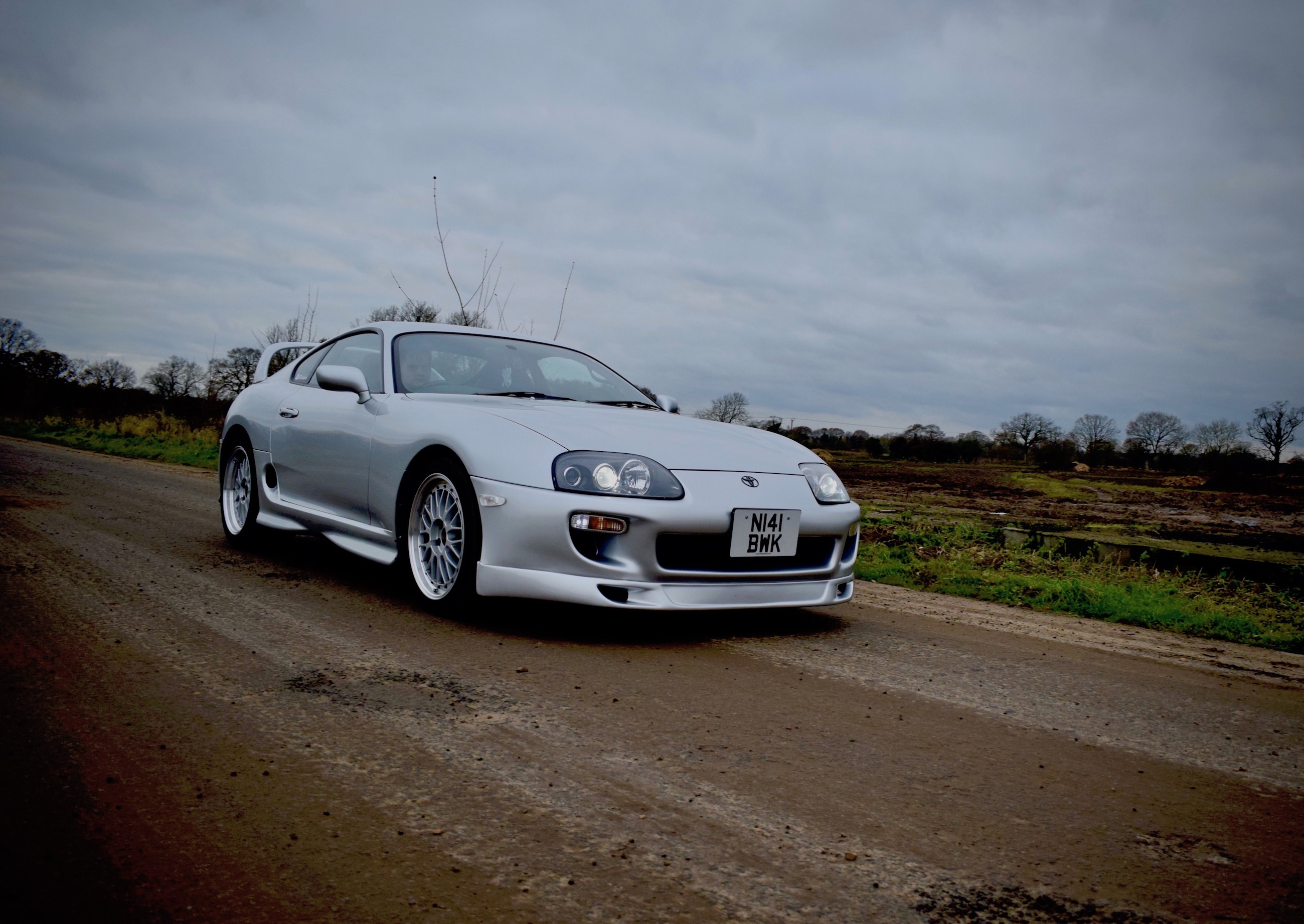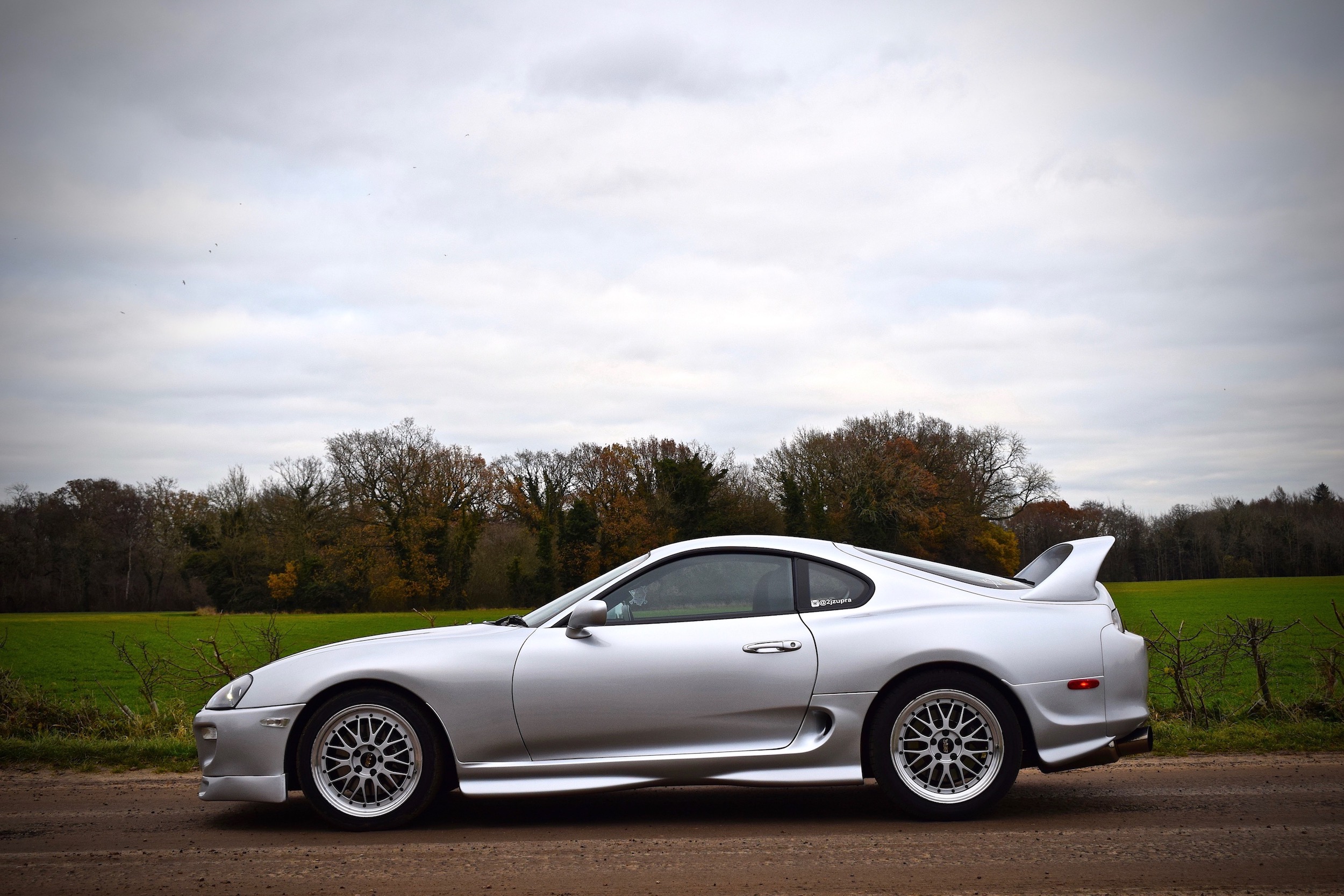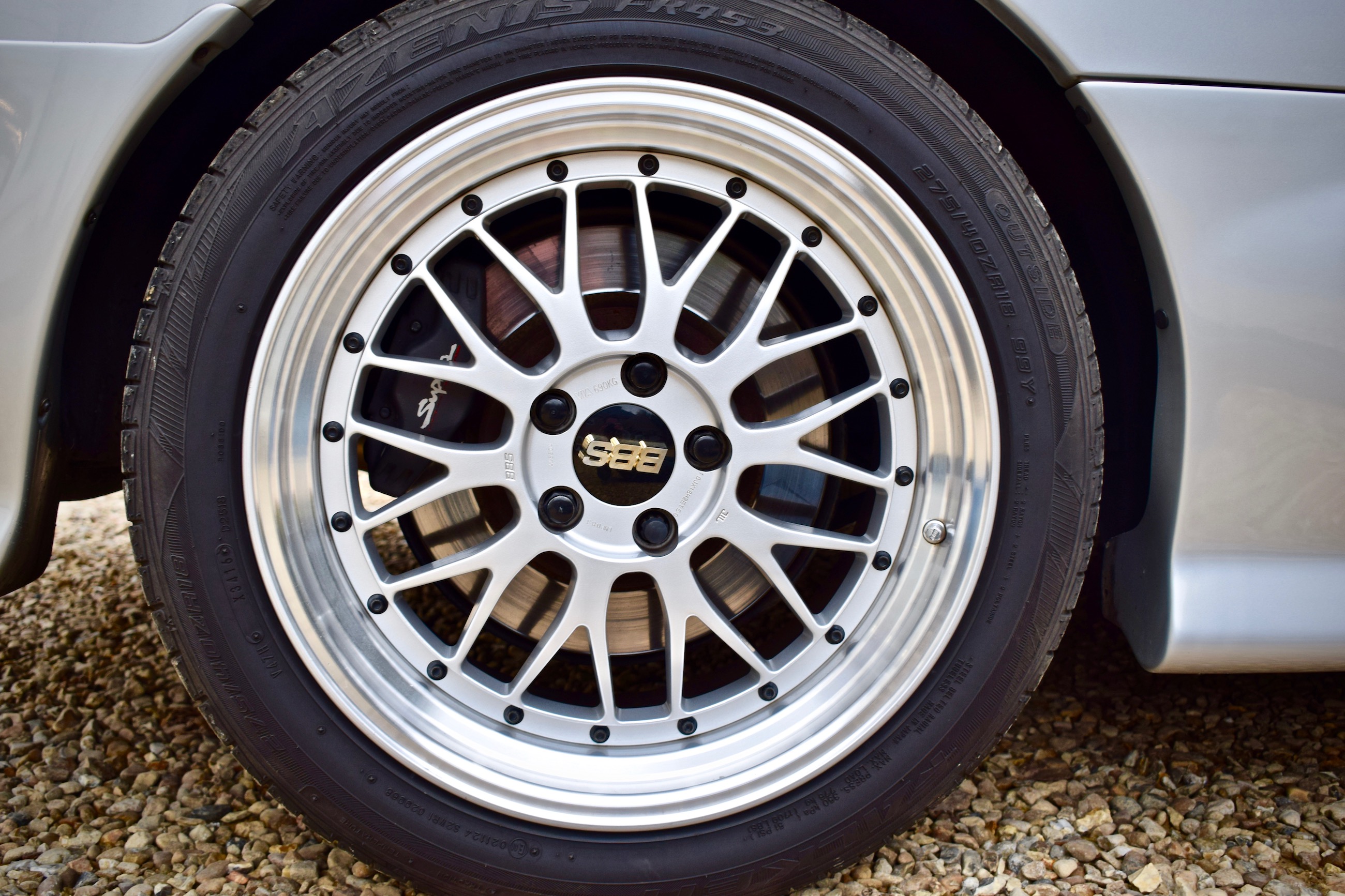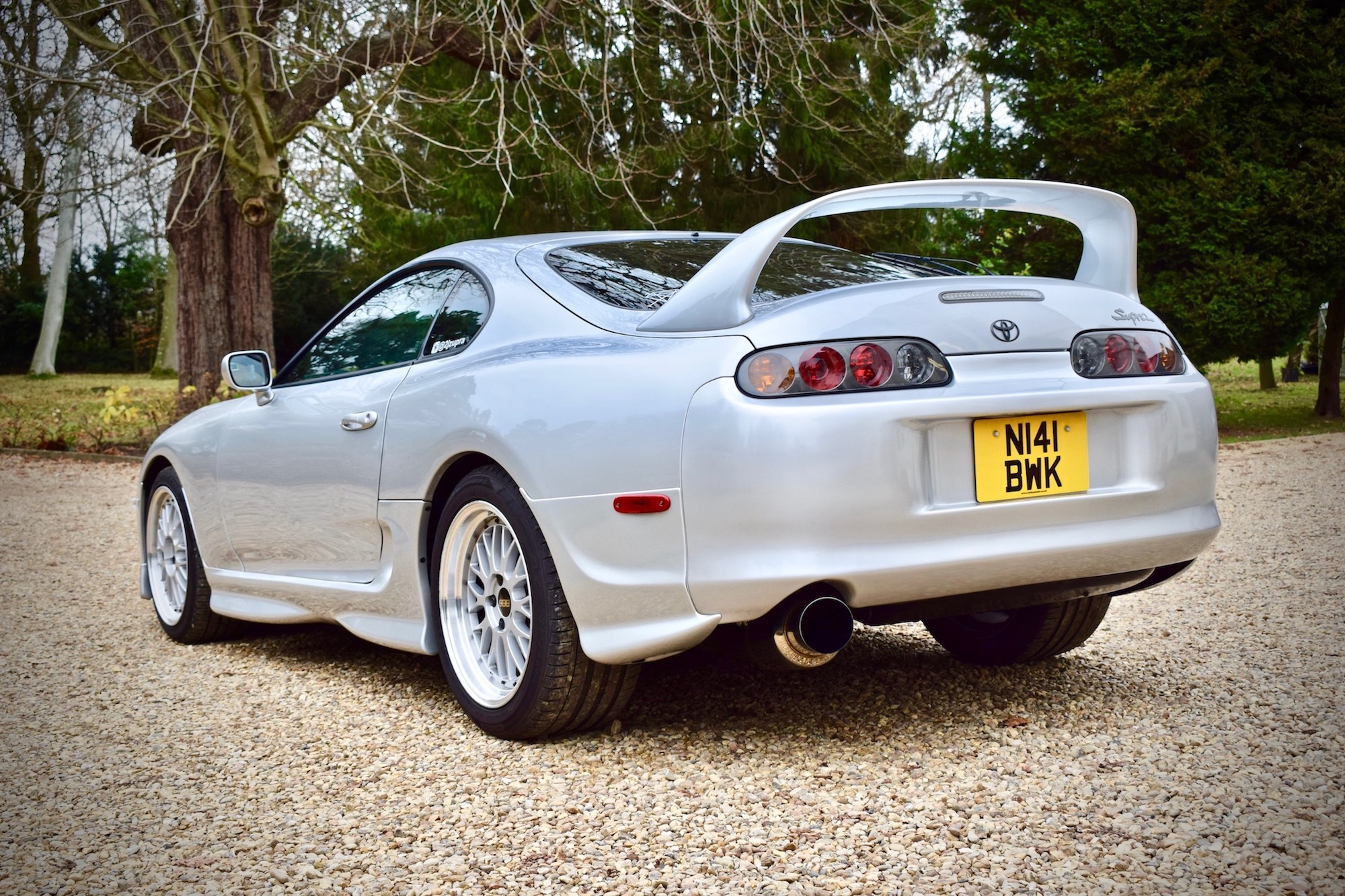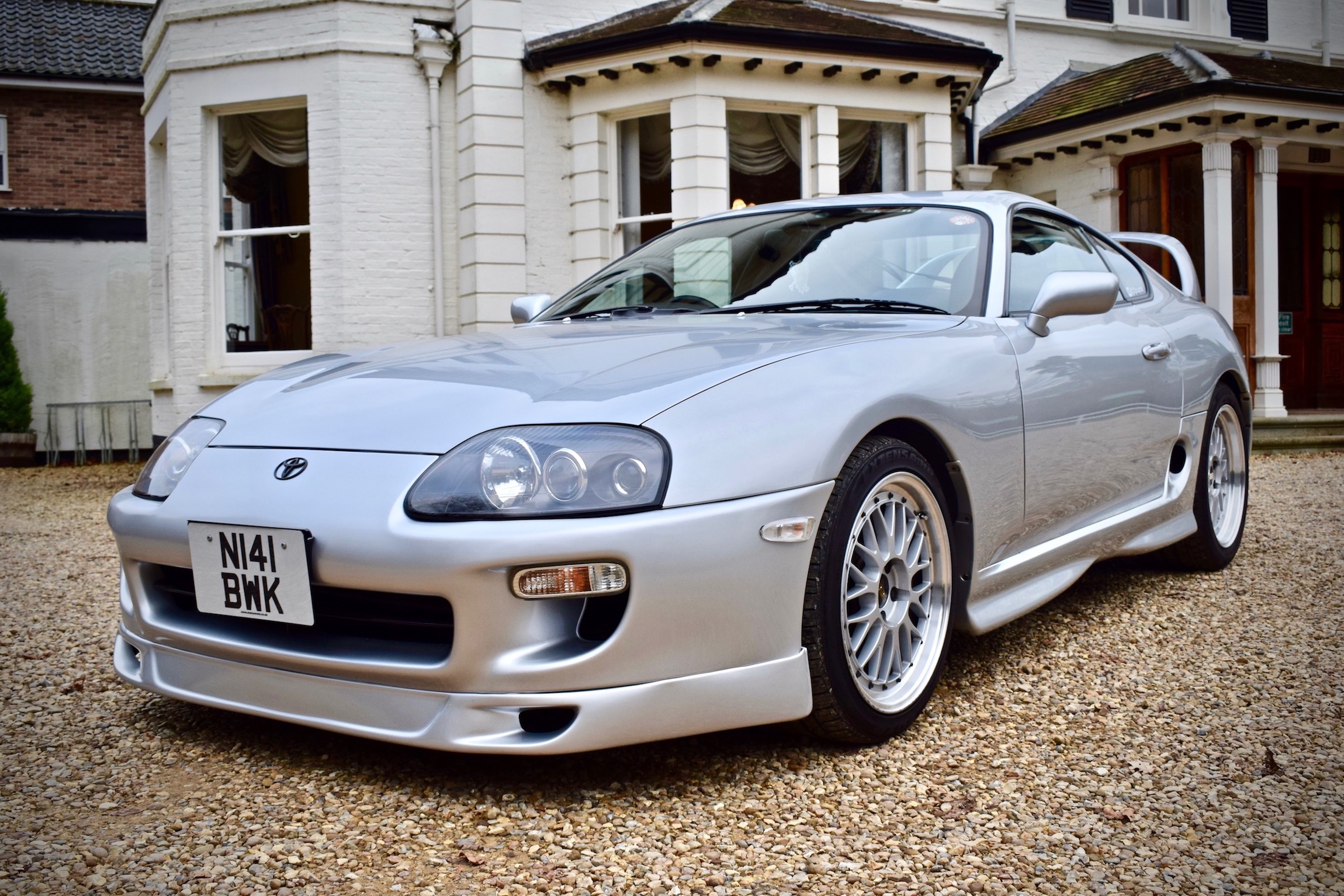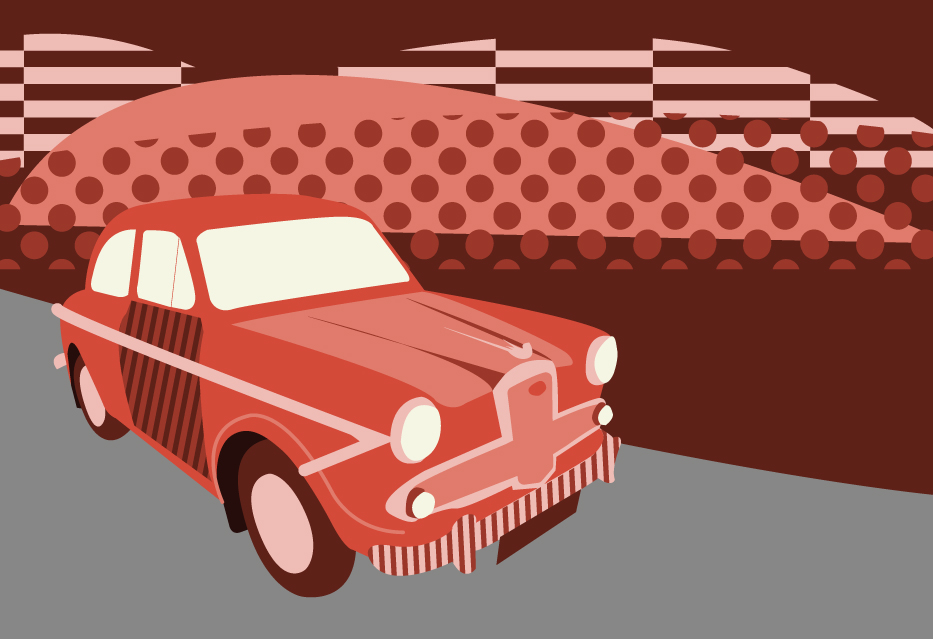Toyota’s first Supra was little more than a badge on a Celica, at 110bhp a world away from the fire-breathing budget supercar it was to become.
It wasn’t until 1986 that the Supra became a model in its own right, and the car had to wait until the A80 generation in 1993 to truly catch fire.
We explore the history of the cult Japanese classic, and speak to one owner about his pristine import.
The Supra story is one that burns very slowly, with gradual improvements and power increases spread over two decades from relatively humble Celica-derived beginnings to a realistic 911-challenger.
Back in 1978, Toyota was looking for something to challenge Datsun’s Z-cars, which ruled the roost in the popular GT market in the company’s home market and in North America.
Rather than create an entirely new car, they stretched and widened the mark 2 Celica, gave it a range of new, six-cylinder engines and stuck the Supra name on the back (although it was called the Celica XX in Japan).
Performance was respectable rather than electric for the period, with the final cars of the first generation able to hit 60mph in 10.24 seconds before the introduction of the more angular mark 2, launched in Japan in July 1981.
Again, it shared the platform and overall design of the Celica, the only noticeable differences the restyled front end featuring retractable headlights, and flared wheel arches.
Under the bonnet, the Supra gained a new, 2.8-litre twin-cam engine to add some much-needed grunt to go with the more aggressive styling.
Power output was now up to 145bhp, and that 0-60mph sprint had dipped under 10 seconds for the first time.
Ride and handling were provided by four-wheel independent suspension tuned and designed by Lotus, variable assisted power rack and pinion steering, and McPherson struts up front with semi-trailing arm at the rear.
Engine improvements during the second generation’s model run saw power boosted to 161bhp and, by the time the mark 3 was ready to enter the fray in 1986, the Supra could hit the 60mph mark in just 8.4 seconds.
The Supra was ready to break free from its Celica heritage and go it alone…
The first true Supra
Freed from the shackles of the Celica’s design and platform, the first purpose-built Supra was launched in February 1986.
While the new Celica switched to front wheel drive, the Supra was driven by the rear wheels and, while the design was hardly groundbreaking, it was a handsome enough sports tourer.
The largest engine now on offer was Toyota’s flagship 3-litre straight-six 7M-GE unit, now packing 200bhp, while all-new electronic independent suspension was introduced for the first time.
Testing the car, Motor magazine asked if a car costing £15,299 – cheaper than Nissan’s 300ZX Turbo – was now a Porsche-beater.
The answer? Not yet. Not quite.
For sure, the car was “big, handsome, fast and safe…a lot of capable car for the money”, but, said Motor, “excessive size and weight blunt the engine’s 200bhp potential”.
“It feels a heavy car, one with little finesse or genuine agility,” the tester concluded.
This may not have been entirely fair when comparing the larger Supra with the Porsche 924S and the lightweight Lotus Excel, although those cars were both in the same price bracket.
The fact is, it was nearly 400kg heavier than both, yet still matched both with a 7.9-second sprint to 60mph and carried on to a higher top speed than either of 137mph.
Where the Supra gained over those cars was in its ability as a motorway cruiser, rather than an out-and-out sports car, as Motor Sport magazine noted: “While idling, it is so smooth that one has to glance at the tachometer to check that it is indeed running, and this refinement extends to the rest of the car too. “Suppression of wind and tyre noise is equally good, and a softish ride together with the generous equipment and elaborate seats confirm the Supra as a superior motorway cruiser.”
Autocar agreed, praising the Supra’s handling, ride and equipment levels, describing a “fully-loaded, high-speed cruiser meant for the USA”.
Buyers in Japan and America had been given a turbo from 1987, but customers in the UK had to wait until 1989 and the arrival of a midlife facelifted car.
Power was up to 230bhp and torque boosted by 35 per cent to 254lb/ft, changes that, for the first time, lifted the car into supercar challenger territory, or at least “super-GT” to compete head-on in the US with the Mustang.
The boosted Supra could now hit 60mph in just 6.1 seconds, a whopping 1.9 seconds faster than the naturally-aspirated model.
The car was still heavy, it was still more long-distance mile-eater than sprightly sportscar, but the turbo gave it the oomph to haul its bulk all the way up to a claimed 153mph.
Car and Driver was suitably impressed: “Few luxoboats can move like this machine. This is big-league stuff.
Like our illustration of the Toyota Supra at the beginning of the article?
Download a free high-quality poster version here.
“The scintillating performance is deceptive. The engine revs smoothly and easily, never seeming to work hard, and the big, heavy body absorbs bumps and keeps road and wind noise to a minimum. You never feel as if you are driving the Supra very fast. One glance at the speedometer, though, and you see that you’re moving rapidly indeed.
“The Supra Turbo offers a mix of performance, luxury, and value that few cars can match.”
Tester Csaba Csere added: “It’s still no light and lively GT, but for anyone looking for a cut-rate Porsche 928, the Supra Turbo is hard to beat.”
Supra hits new heights
An all-new model was in development as early as 1989, but mass production didn’t kick in until four years later as Toyota took their time to create a serious high-performance car with a bold new look.
They got it spectacularly, sensationally right.
A curvy, aerodynamic bodyshell, with more than a few styling cues taken from no less a car than the Ferrari F40, the squat, aggressive-looking Supra certainly looked the part.
The design also echoed Toyota’s first grand tourer, the beautiful 2000GT from the late 1960s, while it was shorter, wider and lower than the outgoing model, with 100kg of weight also saved.
Road and Track described “a husky-shouldered, squatting, angry-looking car with a big hungry face”.
Power was provided by a new 2997cc straight-six engine, providing 220bhp in naturally-aspirated form and 326bhp with twin turbos, which served up a whopping 315 lb/ft of torque.
The Supra was now a bona-fide supercar killer, the twin turbo defeating both the Porsche 911 Turbo and Aston Martin DB7 in road tests, for a fraction of the price.
In 1979, the very first Celica Supra would hit 60mph in a vaguely nippy 11.2 seconds, but just 14 years later this twin-turbo monster scorched its way to the benchmark in an astounding 4.6 seconds. Top speed is restricted to 155mph, but could theoretically push on beyond 175mph. Some progress, indeed.
The Supra’s turbos operate sequentially, the smaller one spooling up to full boost at around 2500rpm with its big brother crashing in at 4500rpm, to devastating effect.
Running the turbos sequentially, as opposed to in parallel, gives the Supra supreme grunt lower in the rev range while providing an extra kick at higher revs.
To prove the point, 90 per cent of maximum torque is available below 3000rpm.
With all this power, and no little weight, the Supra needed brakes up to the task, and it got them.
The turbo model stood on 17-inch alloy wheels to accommodate a Formula One-inspired braking system that allowed the car to record a world-best stopping distance from 70mph of 45 metres in 1997. It wouldn’t be beaten until 2004, when the Porsche Carrera GT stopped one metre shorter.
Testing the car against a BMW M3 in January 1994, CAR magazine’s tester could scarcely contain his excitement.
“It’s blistering acceleration that rockets the Toyota into the record books, not to mention the upper echelons of the supercar league where twice the money buys little or no more performance, and in some cases (Ferrari 348, for example) less.
“At full charge, the lungeing Supra is a thrilling machine, its Herculean acceleration truly awesome, its ability to zap past lumbering artics a revelation.
“It can accelerate faster in fifth than a £124,000 Ferrari 512 TR in fourth.”
Road and Track called it “a romping, stomping, non-negotiable sports-car success”.
“Like the Supra Turbo’s acceleration, its handling and braking prowess are close to the best we’ve ever seen, regardless of cost,” it added.
According to Motor Sport magazine, its ‘non exotic’ badge was the only drawback (that, and its love-it-or-hate-it rear spoiler).
“Wild and alternative, this is the brashest Supra yet,” it said. “But, were it not for the gross rear wing, it would also be the most tasteful. Nissan 300ZX, or even Honda NSX buyers may consider it, but whether a potential Porsche 968 owner would bring him/herself to do the same is debatable.”
The Supra was axed for sale in the UK in 1996, and in North America two years later, with only Japan’s domestic market continuing with reduced production runs until 2002 when more stringent emissions targets finally killed off the model.
Adrian Flux Classic Car Insurance
But by then, it had long sealed its legacy as a world-beating, supercar-killing GT. A journey that began as a badge on a souped-up Celica ended with a car good enough to outperform a Porsche 911 Turbo.
Once the Supra became affordable on the used market, it quickly assumed cult status among modifiers, its aggressive looks, huge power and highly-tunable engine lending itself to customisers everywhere.
The cars can be modified to produce over 700bhp on a standard engine and transmission while, in 1999, legendary Japanese tuner “Smokey” Nagata famously shipped a Supra producing 1,000bhp to England aiming to hit 200mph on the A1.
He managed to reach 197mph on wet roads in the dead of night before he was stopped by police, jailed for the night, fined and banned from driving in England for 28 days – and promptly deported.
The future
A reborn Supra has been mooted ever since Toyota showed the FT-HS concept at the 2007 North American International Auto Show.
But nothing concrete emerged for a decade, when Toyota revealed it was working with BMW on a joint project that would see a new car launched alongside the German company’s latest Z4, sharing a platform.
Eager Supra fans were hoping the new car would be unveiled at the Detroit Motor Show early in 2018, but Toyota said the car was not ready – and may not even be called a Supra.
Toyota group vice president Jack Hollis said that while Supra was still a candidate, “there are other names that could be better”, including the possibility that it will fall under the new Gazoo Racing brand.
Likely to feature hybrid technology, we can only hope that we don’t have to wait too much longer to see the new car – and that it’s called a Supra.
Owning a Supra
Growing up in west Norfolk, Jamie Bishop was surrounded by cars.
At one point, his parents owned no fewer than nine Triumphs, including Spitfires, a Stag, plus TRs 3, 6 and 7, along with everyone’s daily drivers.
He even had a couple of project Spitfires himself at the age of 14, so it’s no surprise that – now 25 – he still has petrol in his veins.
But it’s not British classics that float his boat – it’s raw Japanese muscle, and the latest in a line of eastern quicks is a rare twin-turbo Supra RZ-S imported to the UK in 2015.
A social media co-ordinator for specialist broker Adrian Flux, Jamie bought his auto-box, alpine silver facelift model (one of just 71 made) in March 2017 after a bad experience with a Nissan Skyline GT-R, more of which later.
Having also owned two MR2s and a Nissan 350Z, Jamie knows a thing or two about fast Japanese cars, and describes the Supra as “the perfect GT car”.
“Of all the cars I’ve owned, this does everything I’ve ever wanted,” he adds. “I love the attention it gets and the amount of heads it turns. I get people coming up and asking me about the car, and it brings a certain amount of exclusivity.
“I’ve done events with proper supercar owners, which I would not have been invited to with an MR2. It’s nice that the rest of the world has accepted it’s a Japanese supercar of the period.
“I’ve had a few cars, but I can’t see myself selling this one anytime soon.”
Sitting on BBM LM alloys, the 1996 car has been lightly modified to achieve 368bhp and 332lb/ft of torque, featuring Tein Sport Mono Flex coilovers, a Blitz Nur Spec R catback exhaust with the first catalytic converter removed, a Blitz turbo timer, and an HKS SSQV blow off valve.
Already quicker than standard then, but Jamie has plans to carry out a basic performance upgrade (BPU) that should see the 3-litre 2JZ-GTE engine pump out between 400 and 420bhp, for less than £1,000.
“Twin-turbo Supras run off a map sensor, and power is restricted through the exhaust,” says Jamie. “Therefore making more horsepower is a simple matter of derestricting the factory exhaust to increase the amount of boost the turbos can supply. In this way, a standard Japanese-spec Supra can make anywhere from 400 to 420 horsepower (depending on engine condition) for very little outlay, with only a few supporting mods required.
“Importantly, there is no mapping required, so it is just a simple case of bolt the bits on and off you go.
“The Supra has a reputation as a supercar killer, and this will give it to extra performance to match its reputation.”
It’s a far cry from Jamie’s first car, a 1-litre Vauxhall Corsa, which was followed by a Peugeot 106 before he satisfied his desire for a bit of Japanese speed with his first Toyota MR2.
“My great grandad was Japanese, so I have a link there,” says Jamie. “My grandad liked a lot of my cars because they were very much part of his heritage.”
After briefly going back to a Peugeot, this time a 206, Jamie bought another MR2 but ended up blowing the engine on a track day. He replaced the engine, but it was stripped out for track use and unsuitable for road driving.
“I needed a daily driver and bought the 350Z,” he says. “It made me fall in love with the Nissans. I’d spent a long time modifying the 350, made it into a full show car, with a non standard colour and a body kit. There was no more I could put into it, so I wanted a new project. I had friends with other fast Nissans, 200SX etc, and I almost wanted to one-up them. I wanted to get the grandaddy, the GT-R.”
However, things didn’t go entirely to plan.
“I was in the position where I had money to buy one of my dream cars,” says Jamie. “It was meant to be an investment car. I thought I’d have it for a couple of years, ride the whole price rise wave and sell it again and use the money I make for a house deposit. It was not to be!
Like our illustration of the Toyota Supra at the beginning of the article?
Download a free high-quality poster version here.
“I just didn’t get on with it. It was so harsh, more a race car for the road than a road car. I really regretted selling the 350Z at that point. The Z was a cruiser – you could do a long journey and feel OK at the end of it.”
The R32, tuned up to deliver 450bhp, returned between 8-10mpg, so Jamie bought a Seat Arosa for daily use, but that proved to be the least of his problems.
“I found out that the Skyline’s chassis was rotten,” says Jamie. “I went off the road and hit a tree stump, which pulled off the side skirt and the whole passenger side chassis rail was rotten.
“It had obviously had a previous rear end in Japan which I didn’t know about. It proves the value of the full Japanese service history I have with the Supra.”
The GT-R was written off, and a month later Jamie saw an advert for the Supra not too far from home.
“I’d looked at Supras before but at the time I didn’t have the funds to get a proper twin turbo car,” he says. “This time I realised the money I had was probably at the low end of Skyline GTRs – I could find a nice GTST but didn’t want to go back into it and have a lesser car, so why not look at something completely different?
“I could afford a good twin-turbo Supra and this one came up about 10 miles away. I spoke to the guy that evening, went along the next day and put a deposit on it straight away. It was that good.”
As well as that all-important full service history, the car came with its original Japanese handbook, as well as the original radio, which is merely decorative as it doesn’t pick up any UK stations!
“It had a Fast and Furious-style bumper on it, which made it look pretty badly modified, so I put on a new front bumper and that’s all it really needed apart from a couple of lights that had gone milky,” says Jamie.
“I’ll keep it looking as stock as I can.”
On the road, Jamie has already put more than 8,000 miles on the car after a busy summer at shows up and down the country, and the Supra – which comes from the Latin for “above or “higher than” – hasn’t disappointed.
“It’s exceptionally fast with a huge amount of torque,” he says. “Inside it’s very civilised – there’s not a lot of noise in the cabin.
“Most of my driving has been long journeys, motorway cruising, and it’s proved to be the perfect GT car. The MR2 is more involving to drive, but this does everything well.
“When it came out, this car was much cheaper than the cars it was competing against, but it can do everything as well as, if not better than, them.
“In terms of the performance for the money, there was nothing else in that bracket. It punched well above its weight up against the Porsches, Astons and Ferraris, and it still does.
“I’m a big fan of American muscle cars, but in England you can’t get anything for not a lot of money. When you’re still quite young, Japanese sports cars the only way to get big performance for a relatively small outlay.”
As well as the Supra, Jamie still owns the MR2, and plans to restore it to its former glory as a retirement gift to his parents.
Get specialist insurance for imported cars from Adrian Flux.







